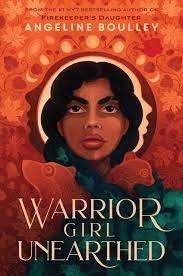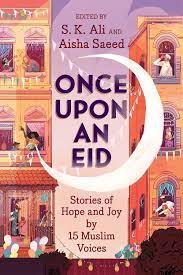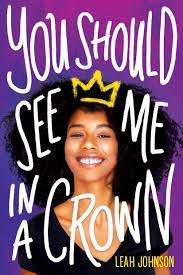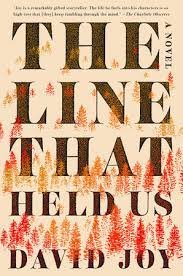As frustrated as we are,
as much as “this isn’t why I became a teacher,”
even though “we can’t possibly expect students to learn under these conditions,”
and despite “none of us were ready for this,” here we are.
This moment is revealing important truths about who we are as teachers, who we expect our students to be, and the massive cavities in education systems around the world. To paraphrase Shakespeare, “There’s something rotten in education.”
While I have one of the most ideal situations (students whose life needs are met, strong leadership, family engagement, support from tech & instructional coaches), by no means is my remote learning classroom perfect. I have students with shaky internet access, students who refuse to turn on their video cameras, and students who aren’t reading directions or submitting assignments on time. Wait, this sounds like my pre-coronavirus classroom.
For those that know me, you know I work tirelessly to establish a common classroom culture. One that is characterized by open-mindedness, acceptance, and doing our best. I pride myself on co-constructing this kind of learning space with my students. It’s this foundation that I relied heavily upon when we transitioned to online schooling.
With the shift, I knew I had to stay true to my values and keep essential elements of the classroom: maintaining an inquiry-oriented environment and discussion-based learning. I rely heavily on student to student discussion to get to any learning objective. I fake like Socrates and constantly pose questions, training students to ask their own questions (of the text, of each other, of me).
After day one of online learning, I realized that my skills in leading and cultivating in-person discussions aren’t exactly transferable to a virtual discussion of Shakespeare with seniors. Hamlet is already a tough read and it is even more complicated when you can’t turn and talk. Although a solid place to start, asking students to share their annotations in a whole group setting was not going to cut it. Even I was zoning out mid-discussion.
As for my Sophomores, we transitioned to a remote classroom amidst reading Trevor Noah’s Born a Crime. While I had the infrastructure and routine of reading a chapter, writing a dialogue journal and discussing that writing, an online platform didn’t give my Sophomores student-to-student discussion time critical for meaning-making.
Here is what I’ve realized and subsequently changed in my practice since March.
Realization 1: The type of questions you can ask in a virtual space need to be scaffolded differently. In a classroom you can see who has an answer, who doesn’t understand your wording and restate the question or who is too shy to volunteer.
Practically speaking: I started writing my tiered questions (moving from a recall level to evaluative/analytical level) into my weekly lesson plans. This way students could see in advance, write/think of a response and not get caught off guard. This was especially important for my higher level questions. For example, while reading Born a Crime I posted questions to help students narrow in on a specific concept in one chapter (Why is the chapter called ____ or What is Trevor Noah’s central idea in this chapter?). Another strategy was to routinely post the same two questions during discussions: Why did you pick this quote? How does this connect to our previous learning?
Realization 2: It’s extremely difficult to create small group discussions in a large virtual class setting (especially if you’re not using Zoom).
Practically speaking:
I’d used Padlet ages ago for some online discussion but found myself turning to this tool once again. With the recent updates, it’s a far more versatile discussion board which allows comments, links, likes, gifs, color coding and more. This worked well to promote student to student discussions and meaning-making for 2 out of 3 of my classes.
For seniors, I set up a Discord channel and created rooms for each Act of Hamlet. I also created channels for independent reading book groups, posting questions, comments and gifs throughout the week. This worked really well for asynchronous learning and provided a way for students to collectively engage with the text and each other “outside” of class.
Realization 3: You can design meaningful interactions through intentionality, planning, and trial/error.
Practically speaking: As students (and teachers) slipped into various online habits, it is imperative you both keep routines and you keep it interesting. If you’re not having fun or growing, then why would a 15 year old be? I’ve added some silliness to my weekly preview videos. I draft weekly journal questions that provide multiple entry points for students, give them choice, and create a space for some of the social-emotional aspects of our learning community.
Realization 4: The world is a dumpster fire and students’ lives are all over the place. You cannot take anything personal and you have to be extra patient.
Practically speaking: Although I feel like I have my stuff together, I still create documents with missing scaffolded steps, forget to link to the article I told students to read, or completely miscalculate how long a task will take. And I’m a grown adult woman who’s been teaching for 14 years. A 15 year old will miss that email you sent, will forget to attach their assignment, will ask the same question you answer 4 different ways to avoid misunderstanding. I try to learn from my mistakes, keep an open-mind when I’m answering students' emails, or just repeat directions...yet again. Look, I’ve definitely failed at this one many times in the last two months, but I’m working on being patient with myself.
Realization 5: Yes, you can give formative and summative assessments BUT you’d better have strong scaffolding and again, patience, for when something goes awry and root all your assessments in equity pedagogy.
Practically speaking: In a virtual classroom I’m unable to read over a student’s shoulder, solicit a quick exit slip, or ask for a fist-to-five (I mean maybe if all students had functioning cameras). Instead, I’ve gotten creative with my formative checks. In weekly sessions, I use “cold calling”, volunteers, and “popcorn calling” for spot checking. I’ve conducted one formal and one informal end of unit survey. Probably the most important thing I did was design a start to finish unit document with clearly labeled, color-coded scaffolded steps. I check everything I assign---to monitor student learning, to offer specific points of improvement, to clarify directions, or to offer praise.
I know summatives are a controversial topic, but imho if you’ve conducted your formatives fairly and equitably (we can parse that out on a different post), then I think summatives can be done the same. To be fair, I’m writing this after having two totally different experiences with recent summatives. One, was super smooth. In part, because it concluded the unit we’d started in real life. The other, less smooth. Although I’d thought my teacher-moves and modeling were perfect, half my students didn’t turn in something I thought was very clear. What became clear was that it was me. So, then I personalized my feedback and asked each student to resubmit with changes. It was fine. But I definitely had to eat my humble pie and “allow” revisions.
Realization 6: You can still teach in a remote learning context with equity and justice at the forefront of your choices.
Practically speaking: Even in a remote context, students and teachers mirror practices and behaviors they had before. Students who inconsistently did their homework previously, are still being inconsistent. Similarly, if you were a teacher that endeavored to be anti-racist and social justice oriented, you are still that same teacher.
Ideally, all year long you’ve built the kind of learning environment that allows for safe discussions of an array of topics and you’ve worked with students to make curriculum choices that reflect a range of voices, perspectives, and ideas about the world. Just because life is a dumpster fire doesn’t mean you throw justice into the burning dumpster. Remote learning is not an excuse for assigning irrelevant texts, using crappy handouts, or forgetting everything you learned about effective teaching and learning.
None of this is easy, but it’s not impossible.
I hope the disequilibrium of this pandemic forces a system wide change. I hope it topples education demagogues who make adult-centered policies. I hope it forces the part of the problem-never-the-solution teachers into another profession. I hope it collapses the obsession with standardized testing. I hope it ignites community-school partnerships to equip neighborhood schools with 20th century access to technology. But most of all, I pray that we learn something from the coronavirus and not only reimagine what learning looks like but actually have the political and social will to implement what we know will improve K-12 education.




























